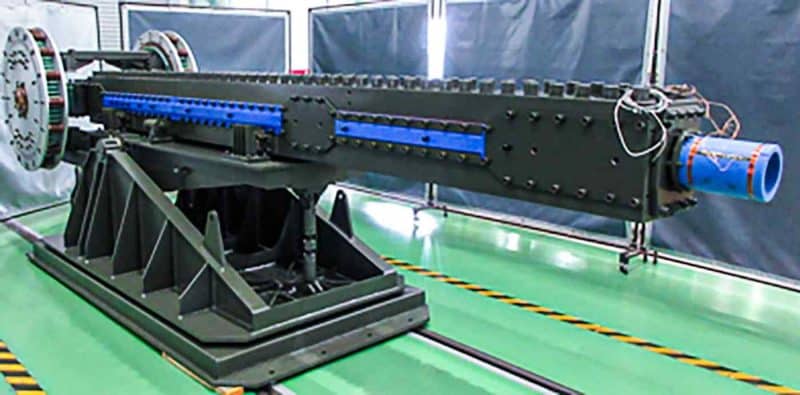The technology of electric guns, or rail gun, had the favor of many staffs a few years ago, especially in the United States, where the US Navy had invested several hundred million dollars to develop its own model. But for some time now, and above all since the abandonment of the program by the Pentagon which prioritizes directed-energy weapons like high-energy lasers and microwave cannons, the craze for this topic seems to have dried up somewhat. Even the Chinese program, which had yet hit the headlines three years ago whena Rail Gun was observed on a tank transport ship for testing, seems to have evaporated, at least on the public scene. For Tokyo, on the other hand, this technology is of strategic interest., especially for address certain shortcomings of the anti-missile shield currently in service, and thus face the new Chinese, North Korean and Russian hypersonic weapons.
Recall that an electric gun replaces the energy produced by chemical combustion to propel the shell, by a strong magnetic field offering very high muzzle exit speeds that can reach and exceed 2000 m / second or Mach 6. In fact, the projectiles thus propelled have very high kinetic energy, giving them an increased range which can reach and even exceed 200 km, and a very high velocity compatible with the needs of modern anti-aircraft and anti-missile defense. In addition, the absence of a chemical propellant is supposed to lighten logistics, allow very high rates of fire, offer advanced screening of the target by controlling the power of the shots, and reduce the risk of conflagration if the gun were to be shot. target. On the other hand, to operate, Rail Guns require a very large source of electrical energy, as well as very advanced materials to withstand the immense thermal and mechanical stresses involved.

Despite these tempting promises, Rail Gun technology, if it is not strictly speaking abandoned by many countries, has seen its ambitions reduced in recent years, and the investments devoted to it decrease significantly. There are several reasons for this. First, conventional artillery technology has made immense progress in recent years, notably with the arrival of new ammunition with added propulsion, allowing the range of existing guns to be considerably extended. Thus, Leonardo's M982 Vulcano shell in 127 mm and 155mm version can hit targets beyond 70 km, and Rheinmetall's Assegai V-LAP ammunition can exceed 80 km range from a G6 howitzer. In view of the tactical needs associated with modern artillery, these ranges are sufficient for most scenarios, more distant strikes being the responsibility of long-range artillery employing ballistic missiles, or fighter aviation.

75% of this article remains to read,
Subscribe to access it!
The Classic subscriptions provide access to
articles in their full version, and without advertising,
from 6,90 €.
Newsletter subscription
Register for the Meta-Defense Newsletter to receive the
latest fashion articles daily or weekly


[…] Finally, he engaged in the development of very high technology systems, such as a rail gun, directed energy systems, a combat drone as well as missiles equipped with gliders […]